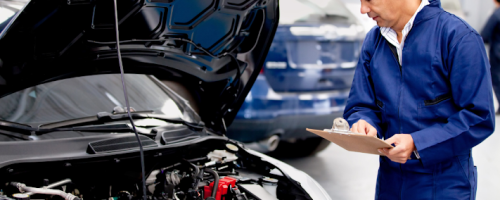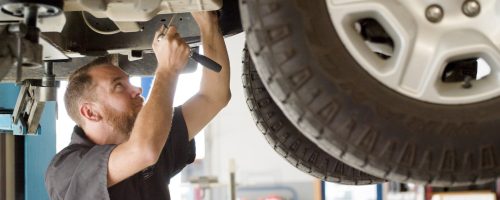In the vast and varied landscape of automotive regulations, obtaining a roadworthy certificate is a crucial step for vehicle owners to ensure their vehicles meet the necessary safety and environmental standards. In Darwin, Australia, the road to a roadworthy certificate involves a meticulous inspection process that aims to guarantee the safety and reliability of vehicles on the road. In this comprehensive guide, we will delve into the details of Darwin’s inspection process, exploring the key components, the significance of roadworthiness, and the steps involved in obtaining this essential certificate.
Understanding Roadworthiness
Before we embark on the journey through Darwin’s inspection process, it’s essential to grasp the concept of roadworthiness. A roadworthy certificate is a document that verifies that a vehicle is safe to be on the road, meeting specific criteria set by the authorities. The certificate is not only a legal requirement but also a testament to the commitment to road safety.
The importance of roadworthiness cannot be overstated, as it directly contributes to reducing accidents and ensuring the well-being of both vehicle occupants and other road users. Darwin, like other regions, has stringent standards in place to evaluate the roadworthiness of vehicles, aiming to create a safer and more reliable road environment.
Key Components of Darwin's Inspection Process:
Structural Integrity
The structural integrity assessment serves as the foundation of the entire roadworthiness inspection process. Inspectors meticulously scrutinize the vehicle’s chassis, body, and overall frame to detect any signs of wear, damage, or compromise. This involves examining for rust, corrosion, or structural deformities that may weaken the vehicle’s core structure. A sound structural foundation is paramount for the safety of the occupants and the overall stability of the vehicle, especially during unforeseen events such as collisions or harsh driving conditions.

Brake System
The brake system is a linchpin in ensuring road safety, and inspectors leave no stone unturned in their evaluation. Beyond a cursory glance, inspectors delve into the intricacies of the braking system, assessing the condition of brake pads, discs, and the hydraulic system. They look for signs of wear, overheating, and brake fluid leaks. Confirming that the braking components meet stringent standards is crucial, as any deficiencies in this area can lead to compromised stopping power, potentially resulting in accidents. Rectifying issues promptly is non-negotiable to secure a roadworthy certificate.
Lights and Indicators
Proper illumination is indispensable for safe driving, especially in adverse weather conditions or low-light situations. Inspectors conduct a comprehensive check on all lights, from headlights and brake lights to indicators and hazard lights. Malfunctioning lights not only reduce the driver’s visibility but also compromise the ability of other road users to anticipate the vehicle’s movements. Addressing issues related to lighting is not merely about regulatory compliance; it’s a proactive measure to prevent accidents and promote a safer driving environment for all.
Suspension and Steering

The suspension and steering systems are critical contributors to a vehicle’s stability and control. During the inspection process, inspectors scrutinize these components for signs of wear and tear, leaks, or any abnormalities that may affect performance. A compromised suspension system can result in a bumpy ride and poor handling, while steering issues can pose significant safety risks. Ensuring the proper functioning of these systems is imperative, as it directly impacts the overall safety and maneuverability of the vehicle.
Tyres and Wheels
Tyres, as the sole point of contact between the vehicle and the road, undergo meticulous examination. Inspectors check for adequate tread depth, proper inflation, and visible signs of damage or irregular wear. Additionally, they evaluate the condition of the wheels, including alignment, to prevent issues like uneven tyre wear, which can affect handling and fuel efficiency. Addressing tyre-related concerns is pivotal, as it directly influences the vehicle’s road grip and responsiveness.
Exhaust Emissions
In an era of increasing environmental consciousness, the roadworthiness inspection process extends its reach to emissions standards. Inspectors assess the vehicle’s exhaust system to ensure compliance with specified emission levels. This not only contributes to a cleaner and healthier environment but also aligns with global efforts to reduce the carbon footprint of vehicles. As a responsible measure, vehicle owners must address any issues related to emissions promptly to obtain or renew their roadworthy certificate.
Electrical System
The electrical system inspection goes beyond confirming the vehicle’s operational functionality; it encompasses critical components like the battery, alternator, and wiring. A well-functioning electrical system is not only essential for the vehicle’s day-to-day operation but is integral to the safety of the driver and other road users. Malfunctions in the electrical system can lead to unexpected breakdowns or, in extreme cases, compromise the vehicle’s control and safety features. Addressing electrical issues promptly is both a regulatory requirement and a fundamental aspect of responsible vehicle ownership.
Steps Involved in Obtaining a Roadworthy Certificate:
Pre-Inspection Checks
Before presenting the vehicle for an official inspection, it’s advisable for owners to conduct their own pre-inspection checks. This includes ensuring that all lights, indicators, brakes, and other essential components are in good working order. Addressing minor issues beforehand can streamline the inspection process.
Selecting an Authorized Inspection Station
In Darwin, roadworthiness inspections must be conducted by authorized inspection stations. Vehicle owners should choose a reputable and accredited station to ensure a thorough and fair evaluation of their vehicle. These stations have certified inspectors who follow standardized procedures to assess a vehicle’s roadworthiness.
Scheduling the Inspection
Once an inspection station is selected, the next step is to schedule the inspection. Timely scheduling is crucial, especially if the vehicle requires any repairs or adjustments to meet the required standards. Planning ahead can help owners address potential issues and avoid delays in obtaining the roadworthy certificate.
Comprehensive Inspection Process
During the inspection, certified inspectors systematically evaluate the vehicle based on the key components mentioned earlier. Owners may be provided with a checklist outlining the areas of focus. The inspection process is designed to be thorough, ensuring that all safety and environmental standards are met.
Addressing Deficiencies
If any deficiencies are identified during the inspection, vehicle owners are notified, and a detailed report is provided. It is the owner’s responsibility to address these issues promptly. Depending on the nature and severity of the deficiencies, repairs may range from simple adjustments to more complex interventions.
Re-Inspection if Necessary
In cases where significant repairs are undertaken, a re-inspection may be required to verify that the identified issues have been successfully addressed. This step ensures that the vehicle now meets the required standards before the issuance of the roadworthy certificate.
Issuance of Roadworthy Certificate
Upon successful completion of the inspection process, and after addressing any identified deficiencies, the authorized inspection station issues the roadworthy certificate. This certificate is a legal document that attests to the vehicle’s compliance with safety and environmental standards, allowing it to be legally driven on the roads.
In conclusion, Darwin’s roadworthiness inspection process is a crucial journey toward safer roads and responsible vehicle ownership. From scrutinizing structural integrity to evaluating emissions and electrical systems, each step ensures that vehicles meet stringent safety and environmental standards. As drivers, it is our shared responsibility to actively participate in this process, addressing identified issues promptly. The road to a roadworthy certificate is a testament to our commitment to road safety and environmental stewardship. For a seamless experience on this journey, contact us today. Secure your roadworthy certificate and contribute to a safer, more reliable road environment in Darwin.
Contact Us Today to Ensure Your Vehicle’s Roadworthiness!

